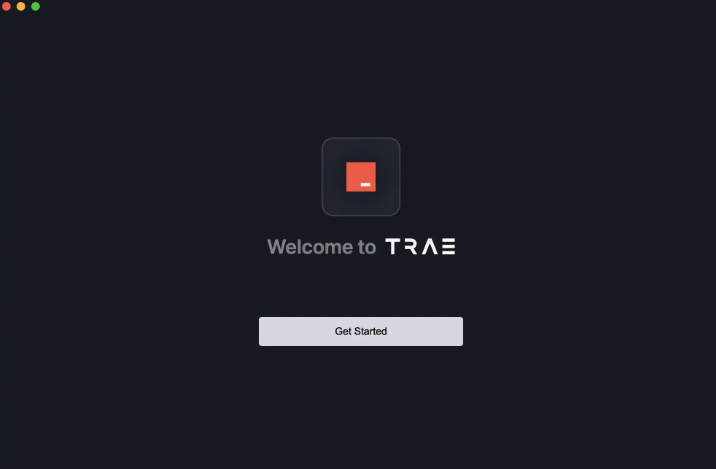Trae, an AI IDE product owned by ByteDance for overseas markets, was officially launched today!
As a new AI IDE that directly targets Cursor and Windsurf, Trae’s goal is not only to compete with these tools, but also to make up for their shortcomings in the Chinese developer experience. Now Trae IDE’s Claude 3.5 and GPT-4o are free for a limited time. If you are interested, come and experience it–trae.ai
Our internal site collects many AI tools that can be used quickly。Here
In fact, looking back, most of our daily code writing is inseparable from English. Variable names, function names, comments, and even tool interfaces and documentation are almost all mainly in English. For Chinese developers, this combination of Chinese-English working model has become accustomed to it, but this does not mean that we don’t need a tool that is truly tailored for Chinese developers.
Many foreign IDEs, such as Cursor, Windsurf, and even Vscode, are powerful, but they are not particularly optimized for Chinese developers. Especially in terms of Chinese language support, it often seems a little “acclimatized.”
Trae appeared precisely to solve these pain points. As an IDE that supports Chinese language, Trae fully considers the actual needs of Chinese developers from the underlying design. Whether it is the comprehensive Chinese culture of the interface language or the friendly support for code comments, Trae allows developers to feel a smooth experience at the “native language level”.
Of course, Trae also integrates the mainstream foreign models Claude 3.5 and GPT-4o to provide developers with intelligent code generation and logic optimization functions. These models have performed quite well in understanding Chinese requirements, but occasionally due to subtle differences in semantics, the answers generated may not fully meet expectations. However, this is not the core issue of Trae, because Trae’s focus has never been on “how smart AI dialogue is”, but how well it fits our actual usage scenarios as an IDE for Chinese developers.
Next, I will talk about how Trae improves development efficiency based on my own experience, and what are the differences between Trae when benchmarking Cursor.
Hello World – Trae
1.Based on Trae currently only supporting MacOS systems, after installation, open Trae and you will see its iconic logo:

2.Let’s go straight to the next step. Here, we can directly select the default built-in language and theme of the IDE. It is simple and clear. At this time, friends with poor English can decisively choose Chinese:

3.Our next step, it turns out that we can directly migrate from the existing local Vscode or Cursor configurations, which is quite coincidental. Initially, my configuration was using Vscode, and when I first used Cursor, I could directly migrate from the Vscode configuration. But now it’s Trae’s turn, which is a bit dramatic, but indeed very convenient, and it’s done in no time:

4.Next, like Vscode or Cursor, you can install the corresponding command-line tools in the local terminal:

5.It’s best to register and log in to use it. So far, calls to the AI model are restricted and free, so everyone can use it:

6.Finally, there is Trae’s interface, which is very similar to Vscode or Cursor. They should both be developed based on Electron, so the basic interface and user experience are quite similar. There is no need to elaborate further.

Trae first try
Enter the Trae interface, first I went to check the supported large models, currently there are only two:

Claude 3.5 Sonnet
GPT-4o
Both are mainstream programming large models, and both are free to use, currently safe to use.
Then I checked the sidebar again and found the iconic feature of the Marscode tool – Webview:

Summer
The emergence of Trae is not only to solve the problem of “acclimatization” among Chinese developers in the use of tools, but also a new attempt to move from localized experience to global vision. It redefines the standard for Chinese developer-friendly IDEs by deeply optimizing Chinese language support, functional design that suits developers ‘actual scenarios, and integrating mainstream AI models.
More importantly, the significance of Trae is not limited to the tool itself. It represents the integration of technology and culture. In today’s era of globalization, the use of technical tools should no longer be limited to a single language or culture, but should truly serve a diverse developer community. The birth of Trae has undoubtedly provided a more efficient and friendly programming environment for Chinese developers, and also provided valuable reference for the localization process of global development tools.


